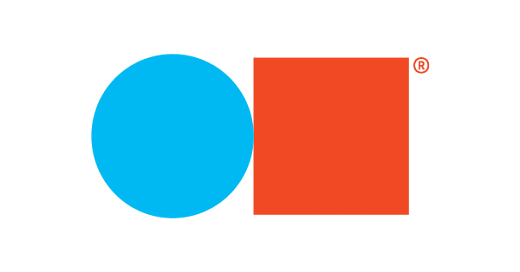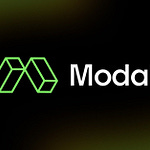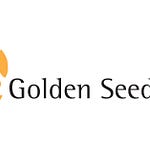This is the first post in a series on the topic of Growth Endurance — fast growth, many years in a row.
We’re accustomed to hearing about startups that have tripled, quadrupled, quintupled, or grown even faster in the early stages. But once you’ve reached the tens of millions of ARR, it’s very hard to grow fast. That’s why very few companies have reached $100M in ARR, and why even fewer continue to double when they’re at that scale.
Bessemer Venture Partners pointed out in their annual State of the Cloud report a few months ago that while 520 unicorns were minted in 2021, only ~60 new $100M ARR companies were added. They gave those companies “Centaur status.” Centaurs are 7x more rare than unicorns. And Centaurs with real growth endurance are even more rare.
Despite their rarity, the imperative to grow fast is stronger than ever before. Companies have raised money at astronomical valuations, which assume they will continue to grow fast for years to come.
But because there are very few companies that have done this successfully, the best practices on Growth Endurance are hard to find. That’s why I launched this new series.
In this episode, I sat down with Ariel Cohen, the CEO of TripActions. TripActions was named to the Forbes’ Cloud 100 list of the world’s top private cloud companies several years in a row. They are also rumored to have filed confidentially to go public at a $12 billion valuation.
You can listen to the podcast or else read the lightly edited transcript of the conversation below. Let's dive in!
Leadership Roles
Here are a few leadership roles at companies that I’m excited about.
Arketa: Head of Demand Gen
Aviator: Growth Marketing Manager
Bubble: Director, Partnerships
Clutch: Head of Enterprise Sales
Explo: Head of Marketing
Fairmarkit: Team Lead, Data Engineering
Jasper: Lots of roles across customer success, engineering, marketing, sales!
LaunchNotes: Director of Engineering (video here)
Motive (formerly KeepTruckin): VP of Customer Success - contact john.gleeson@gomotive.com
Parallax:
Pocus: Founding AE and other roles in Customer Success, Biz Ops, Demand Gen here
Trunk Tools: VP Engineering
Transcript
Allison: Ariel, thank you so much for joining the podcast today to talk about this very interesting topic of growth endurance. You’ve developed a fair bit of expertise about it, so I'm excited to chat with you.
Ariel: It's fun to be here.
Allison: Definitely. I know a lot's happened in a good way in your business since we met at a Fortune conference a few years ago. For folks who don't know, do you want to talk a little bit about what TripActions does?
Ariel: It's super simple. We make travel easy. If you are a frequent traveler, road warrior, we're making sure that everything related to your travel is super, super easy, from booking your trip while you're on the go, to expensing the payments around travel.
Allison: As the readers will know, growth endurance is all about sustaining high growth rates, even as you reach high ARR levels. What's become notable the past few years, even as companies have raised money at sky-high valuations, is that there are very few companies that have reached meaningful ARR scale, and even fewer companies that have reached that scale and continue to almost double year over year.
Bessemer Venture Partners talked about this specifically in their recent State of the Cloud report a few months ago. They were talking about how 520 unicorns with a valuation of over a billion dollars were minted in 2021, but there were only about 60 new $100-million ARR companies added in that same year. The rarity of these companies indicated to them that we should call them something — we should give them a label, in the same way that billion-dollar- valuation companies are called unicorns. So they called these $100M ARR companies Centaurs.
Centaurs are seven times more rare than unicorns. So to kickoff this conversation, I'd love to hear your opinion on why are there comparatively few companies that have achieved that a $100 million ARR threshold?
Ariel: First of all, because it's hard. The unicorn thing obviously relates to market dynamics; part of this is that VCs would invest ahead of future ARR. You can grow into your valuation as expected ARR and actual ARR converge. You also need to prove out unit economics and profits.
So you'll see more unicorns than centaurs because not all the companies that VCs hope will achieve the $100M ARR threshold actually do it. That’s the world of startups. In particular, the mechanics to get to $100 million ARR requires product-market fit across various stages, not just with early adopters.
Allison: You mentioned product-market fit just now as an indicator of whether a company is likely to make it to $100M ARR. I'm wondering, is there a slightly longer set of primary predictors that you think about when trying to forecast whether a company will make it to that stage?
Ariel: Ilan, my co-founder, and I started TripActions after learning some lessons from a previous startup. Our previous startup was a small startup that got acquired really, really fast after nine months by Jive. If you're getting acquired fast, it means that you didn't think that you're going to achieve product-market fit, and definitely not product-market fit at scale. So, TripActions was built on our lessons from that experience.
The most important lesson was to be in a really, really, really big market. If you are not in a really big market, you can try to push it. Maybe tomorrow you will discover the market. Or maybe the entire reality of the world will move towards your perspective. But that usually does not happen. So if you are going after a really big market, that's a really, really good start.
Allison: I've also noticed with many of the companies that I work with that market size is a primary predictor. I think what's difficult about market assessments is that, at a high level, it can seem pretty simple to size it, but often when you get into the details, it can be really challenging. And it can be even more challenging to forecast how fast your market is growing, which is particularly relevant for a lot of companies that I work with that are trying to create new categories that haven't really existed before. So they're trying to figure out how fast will that “ready” set of clients, who are bought into their new philosophy, grow. Do you have any tips for how founders and their teams can properly size markets, and also properly forecast how fast they're going to grow?
Ariel: I will distinguish between a disruption and a new category. When you are disrupting, you are coming to a well-defined market, which makes it easy and hard. There is existing budget, an existing initiative at your buyer, and known buying cycles.
In our market, which is an existing market, our main challenge is that the cycle of a company that already has a T&E vendor is usually three years. But this year we're going to grow 350%. Part of this is COVID-related, but I'm talking in the hundreds of millions. So, really big numbers. But even after we'll reach that growth rate this year, our plan for next year is to grow at 100%. So even though we are disrupting a market, and the market is well defined and its growth rate is well defined, obviously we want to build our market share even faster than that. To do this, you have to beat the cycles. Because if it's every three years, we will not grow at a 100% year-over-year growth rate. So you need to understand the dynamics of the buying cycle and how to disrupt it.
If you’re building in a new category, you just need to find a way to get yourself into the market. If you’re pursuing a product-led growth (PLG) strategy, it’s probably easier, because you don't need the corporate entity to necessarily adjust to you. If it's not PLG, I think it's hard. I'm actually not sure that I'm familiar with a B2B company that managed to be successful for very long time, meaning they're continuing to grow at a high rate, in a new market, without having some kind of bottoms-up or PLG motion. Because if you don’t have that motion, you will need these main street corporates to adjust to something that is completely new. That’s hard.
Allison: Really interesting. I’ve got to imagine it's probably also easier to forecast how fast your market is growing if you do have a PLG motion and you're able to have a lot of data earlier in the funnel, or at least earlier in the buying journey than you might in a top down context.
Ariel: 100%.
Allison: Speaking of the impact of COVID, because I know you referred to that, there are a number of businesses that, at the start of the pandemic, tanked because everything shut down. But then cloud penetration dramatically increased, because everyone was working remotely. So many tech companies experienced a huge uptick in revenue because of that. Now that things are normalizing, you might experience flatter growth. When there are major market disruptions like this that are macro-economically driven or otherwise are external shocks, it can be hard to figure out how fast your market is growing, or what's going to happen in the market. How did you all handle that during the last couple of years?
Ariel: For us it was obviously an extreme case. Our business model is usage-based, so we make money when our customers are using us. That means that in March and April 2020, our revenue dipped below zero. Not only did we lose all of our revenue overnight, we needed to actually return some of the money. I was always joking that we are the first post-revenue company. You have all of these pre-revenue, companies and we are the first post- one. But jokes aside, I believe that you can look at everything as an opportunity.
You talked about the cloud transformation in COVID. I actually don't think it was a cloud transformation. I think it was an opportunity to think about problems differently, and we saw it in travel. People were not traveling, but we more than doubled our installed base doing COVID. So, how did we do that? We went to companies and we told them: you won’t travel, but you will do expense management. You'll eventually get back to travel, and this is the best time for you to think about it differently with us. So think about it differently from your Amex and Concur. The best time to make a change is when nobody's using the software that you've been using before. That message resonated with our prospects and customers back then.
In general in the tech industry, people were thinking differently about their entire stack of applications. That led to other challenges, such as security, for example. So you started to see the entire B2B SaaS stack growing really fast.
Some companies kept up, and some didn’t. For some companies, their market grew extremely fast, and for others, like us, it slowed down extremely fast. Our market decline didn’t make us extremely bad, but the rapid growth of other markets also didn't make the companies in those markets good, because they were growing simply because of market dynamics. If those companies didn’t recognize that, it became a problem for them. They needed to do things to ensure their future growth, such as acquisitions or starting new lines of business. Eventually the market-driven growth will end. Things don’t grow forever, and definitely not in extreme cases like COVID.
Allison: I agree with you that a lot of companies are very happily riding a wave, but not always thinking about, will that wave end, or can we depend on it entirely for our revenue growth in the future?
If companies are smart, and in the tens of millions of ARR, they're trying to think about how do we continue to grow fast? They're thinking about different levers like launching new products, entering new geographies, entering customer segments, acquiring other product lines, as you said. How do you choose between those different options? Have you seen any good frameworks for thinking about the trade offs?
Ariel: I can share our experience. With COVID, we obviously lost product-market fit overnight. We continued that business and continued to grow it in terms of signing new accounts, with the hope that they would book travel later. But then we said, okay, this market is now questionable, so let's get into a new adjacent market. And that was expense management and corporate payments, and that was TripActions’ expenses and payments product, called Liquid. So we seized another opportunity that was relevant to the same buyer — which was really important, because therefore we could utilize the same sales team, the same go-to-market. We could do an expansion play into our installed base. And that’s what we did. We’ve been selling to our current customers and new ones as well.
We've also done acquisitions during COVID. We acquired an offering related to travel for execs, and the executive assistants in the company, that was more a white glove service. Again, it was relevant for the same customer.
Allison: I'd love to dive in deeper into how you think about acquisitions. How do you decide whether to build something internally versus go out and acquire it?
Ariel: First of all, you really need to want it. It could be a feature or a service or an entire product line that will be a major addition to your business — something significant that changes your business.
At that point you need to ask yourself, is it relevant to my audience, and can I really build it? The build or buy question is not a question of price. Sometimes people are getting obsessed about, will it be cheaper for me to build it? That's not the issue. The issue is the integration. When you are acquiring a company, they will for sure come with a different culture, and I think that you can integrate a lot of things, but one thing that is extremely hard to integrate is culture. Cultures are very sticky and also not well defined. That's why after a lot of acquisitions, it's about “us and them,” and the acquired folks are leaving. Because you'll have this issue, you really need to convince yourself that you cannot build it yourself. If you cannot build it yourself and it's really important from a business perspective, then you should be ready to pay the price of integration of cultural differences. Assuming that you are a good with business modeling and negotiation, the financial cost will make sense, because you've already proven to yourself that you really need it. The real cost is the integration.
When we've done acquisitions, it was after we were not successful in building this thing by ourselves. One acquisition was a VIP agency, which is very different than what we've been doing historically. We tried to build it twice and failed. In addition, we wanted to strengthen our capabilities in Europe. We were in Europe, but not in the same way that we wanted to be in Europe. By doing a major acquisition in Europe, we landed there in an extremely strong way.
Allison: That segues well into my next question. How do you know when you're ready to expand into Europe if you're currently based in North America?
Ariel: You're never ready for that. Sometimes not having a choice is actually a really good thing. When you run a travel company, you cannot actually run a travel company in the US, so you need to be very global. We went globally, and including across Europe, very very early. In parallel we went to Sydney and to Singapore and had a deep partnership in China. As we started to grow and sell to midsize companies, they had offices everywhere, and we needed to support them at all their locations. That's our business. We didn't have a choice. In our third year, we did a B round, and then we became global. As another example, Uber also went global very, very, very early.
In other businesses where you don't have that push from your customers, it's more of a question of, is it time to expand the market to another place? You can test the water a little bit, see how far we are from product-market fit there. You can scale the company up in almost the same way that you did it in the US, just with more resources, because at that stage, you'll have more money, you'll be able to hire different kind of people, and so on. The last thing that I would recommend is to send some of your employees from the U.S. to Europe, because you do want your culture to set the foundation there.
Allison: Switching gears, I'd love to talk with you about how you need to operate differently when you're at scale. When you're approaching $100M ARR and you're trying to sustain very high growth rates, how does your exec team change, how does your board change, and how do you relate to them differently?
Ariel: The obvious things are, hire the right execs and make sure that your processes are scalable. Those are important. But actually, I think that the most important thing is actually not to change. There is some reason why your customers were happy at the Seed, Series A, and B stages, and you should not lose that thing. It could be your approach to sales, it could be the approach to customer success, it could be how you are doing support. I'm not saying don't grow up, but I'm saying don't ditch these things.
These employees worked well for you. It's very tempting to say, now that we are scaling from $10 to 100M, let's bring the CMO, the COO, whatever C-level that is relevant for that stage. That’s the advice that you're going to get from your board, from your advisors, from your peers, from everybody. First of all, I've done all of this. I replaced the COO three times, I replaced two CMOs. I think some of this was a mistake and some of this is, you need to find the balance. If you look at my staff today, you'll see a good mix of people that came over the years as we scaled, and people that were here seven years ago when we started.
For example, the person that runs the Liquid, our expense management and payments for us, Michael. He was our number 10 employee. He was our first sales guy. Now he is running an entire business. Nina, who's running our entire travel business, she's the GM for travel, she started five years ago. She came from mobile, and she was the kind of person who, like I said earlier, you send her somewhere and tell her not to come back until there is a “thing” there, that was Nina. Then you'll see on my staff a mix of newcomers — the scaled people — and also people that were here for quite some time. As I was mentioning earlier, the advice that you have to now “hire the Salesforce guy” didn't really work for us. I think you need to be very careful to find the mix.
Still, the goals are different. You need to ask yourself, about these people who are growing with you, bringing your culture along, and bringing the recipe of how to be successful, can they scale? Can they hire people? Can they grow? Or have they maxed out? If they maxed out, you need to do the normal things that everybody knows you need to do. You need to hire the right execs, and so on.
By the way, it's not that I knew all this 5, 6, 7 years ago. I've learned it, and I'm still making these mistakes, like probably everybody who is listening to this podcast.
Let's say that you are hiring from these very successful companies. Let’s say you are hiring from Salesforce or Amazon or whatever. These companies have really, really strong cultures, and a well-defined way of operation — Salesforce with the V2MOM, Amazon with writing the memo. They will try to bring it to your organization, and it will not work, because this is a different organization. So either don't hire them, or if you hire them, make sure to set up these expectations. I think that that's the temptation you face when you are growing to $100M, or in our case it's growing to $1B. It doesn't mean that you need a V2MOM. Maybe you need the experience, but you also need to make sure that you are keeping your own thing.
Allison: Great advice. I think a lot of that is provocative and contrarian, as you mentioned. It's good to reinforce that and hear that. On another note, how does your board need to change as you get to be a larger scale?
Ariel: I was lucky. We have a board that has really good investors, and more than this, really good partners. You can have a really good VC, but it still doesn't mean that you have the right partner. When I'm looking around the room, I'm very happy with the board that I have. I have added more independent board members recently. But the reality is that we had a nice board with all different types of experiences. I have one side of my board with extremely financial experience, in the weeds of what is gross margins and how can you scale it up, and so on. Very, very, very important. And on the other side, I have someone like Ben Horowitz, who is a very strong operator, who can give you a lot of context around operations and being a CEO in a crisis like what we had in COVID, as well as in more normal times. I don't think the stage is important. I think the quality of the people in the board is the important thing, as well as their experience.
In the later stages, you do want to have people that understand what does it mean to be a public company. But in most of the cases before you're thinking of going public, I wouldn't obsess on it.
Try to partner with the right investors. I think that's really, really important. Most of your board members in the early stages, pre-IPO, will be your investors anyways, so just make sure that you have the right investors.
Allison: Ariel, I have one final question for you, which is, if you have one tip to give to B2B SaaS founders that are a stage or two earlier than you, in terms of how they can sustain really high growth rates going forward, what would it be?
Ariel: Obsessing about product-market fit, and don't assume that it stays. Because as you grow, you are by definition no longer in product-market fit, because you are going into different markets, different segments, different verticals. These customers need something else. If you always make sure that you're in product-market fit, then you'll grow for a very, very long time.
Allison: Ariel, thank you so much for joining us today. This was great.
Ariel: Thank you.











